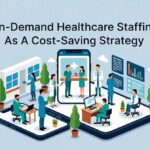Utilization management is an essential aspect of medical practice that involves the evaluation of medical services and treatments to ensure that they are provided to patients in the most efficient and effective manner. This is done by establishing specific guidelines and protocols that healthcare providers follow, and it helps to improve patient outcomes, reduce healthcare costs, increase efficiency and productivity, enhance communication and collaboration among healthcare providers, and ensure compliance with regulations and standards.
In this article, you will learn the benefits of having utilization management in your practice and the challenges involved in implementing it.
Benefit #1: Improvement in Patient Outcomes
One of the primary benefits of having utilization management in your medical practice is the improvement in patient outcomes. Healthcare providers can ensure that patients receive the most appropriate and effective treatments for their conditions. Utilization management also helps to minimize the risk of adverse events and complications, which can improve patient safety and reduce the likelihood of readmissions.
Utilization management can help to identify patients who may benefit from additional services or interventions, such as case management or disease management programs. By providing these services, healthcare providers can help patients better manage their conditions and improve their overall health outcomes.
Benefit #2: Reduction in Healthcare Costs
Another significant benefit of utilization management is the reduction in healthcare costs. By following specific guidelines and protocols, healthcare providers can avoid unnecessary tests, treatments, and procedures that may not be medically necessary. This can help to reduce the overall cost of care and improve the efficiency of healthcare delivery.
Utilization management can also help to reduce the risk of medical errors and complications, which can also help to lower healthcare costs. By providing appropriate and effective treatments, healthcare providers can help to reduce the length of hospital stays, avoid readmissions, and minimize the need for additional services and interventions.
Benefit #3: Increased Efficiency and Productivity
Utilization management can also help to increase efficiency and productivity in medical practices. By establishing specific guidelines and protocols, healthcare providers can streamline the process of providing care and reduce the time spent on unnecessary tasks. This can help to free up more time for patient care and improve the overall workflow of the practice.
In addition, utilization management can help to reduce the administrative burden on healthcare providers. By providing clear guidance on how to provide care, healthcare providers can spend less time on paperwork and more time on patient care. This can also help to reduce the risk of burnout and improve job satisfaction among healthcare providers.
Benefit #4: Enhanced Communication and Collaboration Between Healthcare Providers and Payers
Utilization management can also help to enhance communication and collaboration between healthcare providers and payers. By establishing specific guidelines and protocols, healthcare providers and payers can ensure that everyone is on the same page regarding the best practices for providing care. This can reduce the risk of miscommunication and errors. Therefore, your medical practice needs the best utilization management software available in order to help to improve the overall quality of care and patient outcomes through enhanced communication between healthcare providers and payers.
Benefit #5: Compliance with Regulations and Standards
Finally, utilization management can help to ensure compliance with regulations and standards. By following specific guidelines and protocols, healthcare providers can ensure that they are providing care that meets the standards set by regulatory agencies and professional organizations. This can help to reduce the risk of legal and financial penalties and improve the overall reputation of the practice.
In addition, utilization management can help to improve the overall quality of care provided by the practice. By providing appropriate and effective treatments, healthcare providers can ensure that they are meeting the needs of their patients and providing care that is in line with the latest research and best practices.
Implementing Utilization Management in Your Practice
Implementing utilization management in your medical practice can be challenging, but it is essential to the success of your practice. To get started, you should establish a team of healthcare providers who will be responsible for developing and implementing the utilization management program. This team should include physicians, nurses, and other healthcare professionals who have a vested interest in improving patient outcomes and reducing healthcare costs.
Once you have established your team, you should begin by developing specific guidelines and protocols for providing care. These guidelines should be based on the latest research and best practices and should be tailored to the specific needs of your practice and patient population. You should also establish a system for monitoring and evaluating the effectiveness of your utilization management program.
Conclusion
Utilization management is an essential aspect of medical practice that can help to improve patient outcomes, reduce healthcare costs, increase efficiency and productivity, enhance communication and collaboration among healthcare providers, and ensure compliance with regulations and standards. These benefits prove that your medical practice should be using utilization management software.
Read Also
- Creative Approaches to Alleviating Healthcare Staff ShortagesHospitals and clinics are facing staff shortages, which makes it harder to take care of patients well. Finding simple and useful solutions is very important. Easy changes like flexible work hours, good training, and chances to grow can help staff stay happy. Technology, like online doctor visits and helpful tools, can make work easier. Smart… Read more: Creative Approaches to Alleviating Healthcare Staff Shortages
- Understanding the Role of Sterilizers in Healthcare FacilitiesHave you ever wondered how hospitals keep their equipment safe enough to use on dozens of patients every day? Most people never think about what happens behind the scenes, yet these hidden steps play a huge role in patient safety. Sterilizers are part of that system, working quietly to remove harmful germs before any instrument… Read more: Understanding the Role of Sterilizers in Healthcare Facilities
- Building Healthcare Access Where It’s Needed Most: A Local First ApproachHealthcare shouldn’t depend on where you live. But in the U.S., it often does. If you’re in a big city, you likely have options. If you’re in a small town or an underserved neighbourhood, it’s a different story. To fix this, more healthcare leaders are turning to a local-first approach. That means putting clinics and… Read more: Building Healthcare Access Where It’s Needed Most: A Local First Approach
- Revolutionizing Patient Engagement: Innovative Solutions for Improved Care and Treatment SuccessNavigating healthcare system can often feel overwhelming for patients. Between appointments, prescriptions, and treatment regimens, it’s easy for crucial details to get lost in the shuffle. That’s why effective patient engagement and support solutions are more important than ever. Companies like Serva Health, with their pharma hub services, are stepping up to ensure that patients… Read more: Revolutionizing Patient Engagement: Innovative Solutions for Improved Care and Treatment Success
- On-Demand Healthcare Staffing As A Cost-Saving StrategyThis is an exciting and challenging time for the healthcare industry. Technology is advancing almost faster than humans can keep pace. New legislation is creating fresh challenges for the future of healthcare, and the shifting population demographic continues to place more pressure on healthcare facilities. Amidst these changes, healthcare facilities are facing a critical staffing… Read more: On-Demand Healthcare Staffing As A Cost-Saving Strategy






